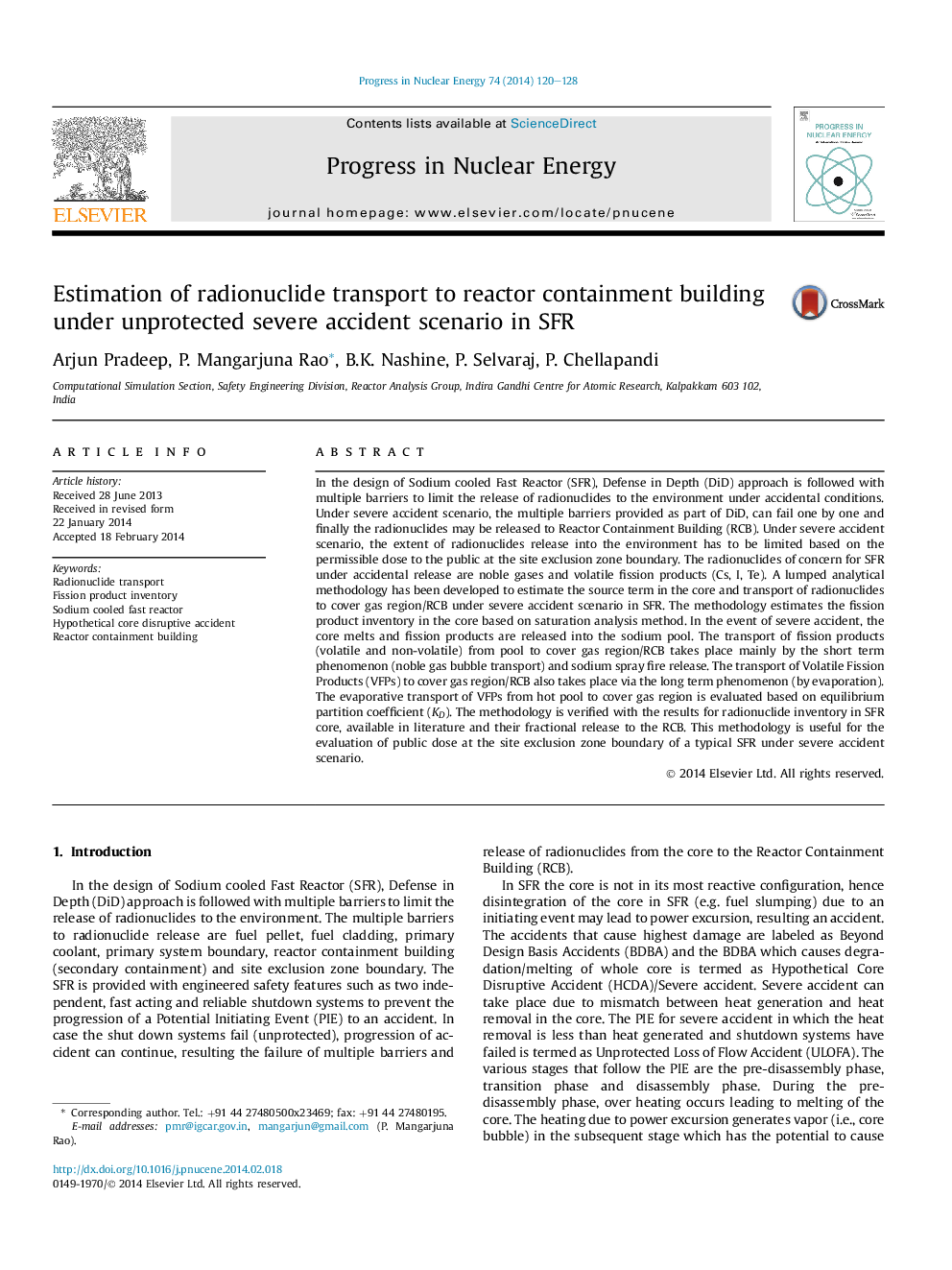| کد مقاله | کد نشریه | سال انتشار | مقاله انگلیسی | نسخه تمام متن |
|---|---|---|---|---|
| 1740517 | 1521764 | 2014 | 9 صفحه PDF | دانلود رایگان |

• Lumped analytical methodology developed to estimate HCDA source term in SFR RCB.
• Methodology verified with existing codes for fission product inventory in core and HCDA release fractions.
• Fission products are major contributors to HCDA radiological evaluation than actinides.
• Under HCDA early release phase bubble transport dominates evaporative transport.
• Methodology developed is useful in estimating HCDA dose at site exclusion zone boundary.
In the design of Sodium cooled Fast Reactor (SFR), Defense in Depth (DiD) approach is followed with multiple barriers to limit the release of radionuclides to the environment under accidental conditions. Under severe accident scenario, the multiple barriers provided as part of DiD, can fail one by one and finally the radionuclides may be released to Reactor Containment Building (RCB). Under severe accident scenario, the extent of radionuclides release into the environment has to be limited based on the permissible dose to the public at the site exclusion zone boundary. The radionuclides of concern for SFR under accidental release are noble gases and volatile fission products (Cs, I, Te). A lumped analytical methodology has been developed to estimate the source term in the core and transport of radionuclides to cover gas region/RCB under severe accident scenario in SFR. The methodology estimates the fission product inventory in the core based on saturation analysis method. In the event of severe accident, the core melts and fission products are released into the sodium pool. The transport of fission products (volatile and non-volatile) from pool to cover gas region/RCB takes place mainly by the short term phenomenon (noble gas bubble transport) and sodium spray fire release. The transport of Volatile Fission Products (VFPs) to cover gas region/RCB also takes place via the long term phenomenon (by evaporation). The evaporative transport of VFPs from hot pool to cover gas region is evaluated based on equilibrium partition coefficient (KD). The methodology is verified with the results for radionuclide inventory in SFR core, available in literature and their fractional release to the RCB. This methodology is useful for the evaluation of public dose at the site exclusion zone boundary of a typical SFR under severe accident scenario.
Journal: Progress in Nuclear Energy - Volume 74, July 2014, Pages 120–128